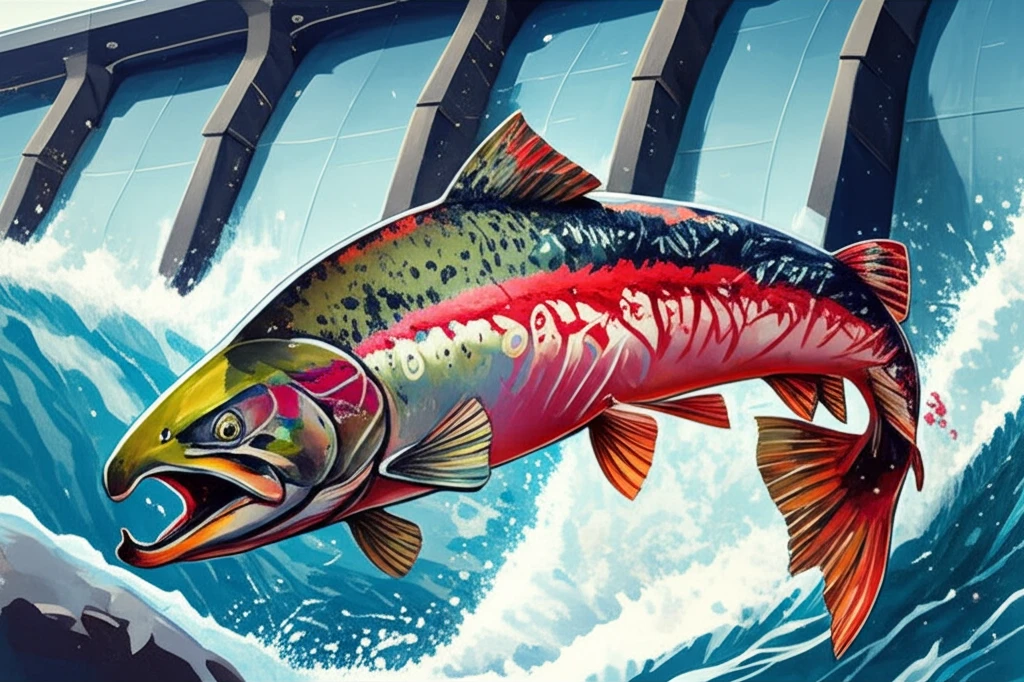
Vanishing Spring: How Human Interference Threatens Wild Salmon
"A new study reveals the rapid loss of adaptive variation in wild salmon populations due to habitat alteration, raising concerns about long-term restoration potential."
Phenotypic variation, the range of observable differences within a species, is crucial for the long-term survival and adaptability of populations. It allows species to withstand environmental changes and enhances their capacity to evolve. However, human activities are significantly diminishing this variation across diverse species, creating an urgent need to understand and address the underlying causes and long-term effects.
Chinook salmon, prized for their cultural and ecological value, exhibit remarkable diversity in their migration patterns. Some migrate as immature adults in the spring (spring-run), while others migrate in the fall as mature adults (fall-run). This diversity allows them to utilize different habitats and cope with varying environmental conditions. However, anthropogenic activities, such as dam construction, are disrupting these migration patterns, leading to dramatic shifts in their populations.
A groundbreaking study published in PNAS (Proceedings of the National Academy of Sciences) investigates the rapid phenotypic changes in wild Chinook salmon caused by dam construction and other human activities. The study reveals a strong genetic link to migration patterns and highlights the potential for irreversible loss of adaptive variation. These findings underscore the importance of conserving and restoring critical adaptive variation to ensure the long-term survival of wild salmon populations.
The Genetic Basis of Salmon Migration: A Single Locus with a Big Impact

The study's most striking discovery is the robust association between migration phenotype (spring-run or fall-run) and a single genetic locus, GREB1L. This locus plays a critical role in determining when salmon migrate, with specific alleles (gene variants) linked to either spring or fall migration. The researchers found that the rapid phenotypic shift observed after dam construction was driven by dramatic changes in allele frequency at this locus.
- Habitat Alteration: Dams and other human activities have altered river flow, temperature, and access to spawning grounds, creating conditions less favorable for spring-run salmon.
- Selective Pressure: Fall-run salmon are now better suited to the altered environment, giving them a survival advantage and leading to increased reproductive success.
- Genetic Shift: The increased reproductive success of fall-run salmon has led to a higher frequency of the fall-run allele in the population, diminishing the spring-run allele.
Why Preserving Adaptive Variation is Key
The study's findings highlight the importance of conserving adaptive variation to ensure species' long-term survival. The loss of the spring-run phenotype in salmon would not only diminish their ecological role but also reduce their ability to adapt to future challenges, such as climate change. This research emphasizes the urgent need for conservation efforts that protect and restore critical adaptive variation before the potential for recovery is lost. It’s a clear call to action: protecting biodiversity isn’t just about numbers, it’s about safeguarding the unique genetic tools that species need to survive.
